IN A COUNTRY with a deep-seated history of Catholicism, and a love of pomp and ceremony, Semana Santa in Spain isn’t just an event. It is a religious, cultural, and social extravaganza – both serious and uplifting – that can leave residents and visitors feeling emotional.
Even if you’re not religious, you can appreciate the time and effort that goes into the processions, run by each town’s ‘hermanadades’ and ‘cofrades’ (dedicated groups that organise the processions).
This time round, with a prolonged wintery spell bringing rain, wind and even snow to Granada region, Semana Santa 2024 has left some people feeling damp – sometimes with tears of frustration, because processions have been cancelled for inclement weather.
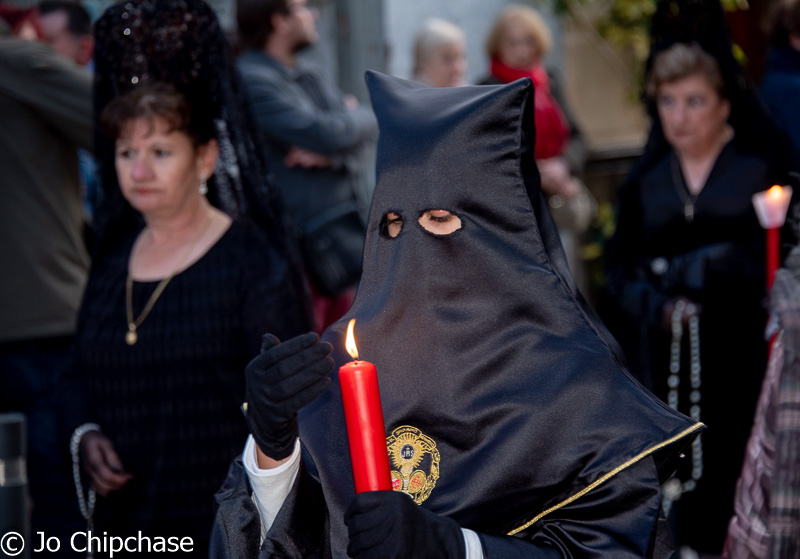
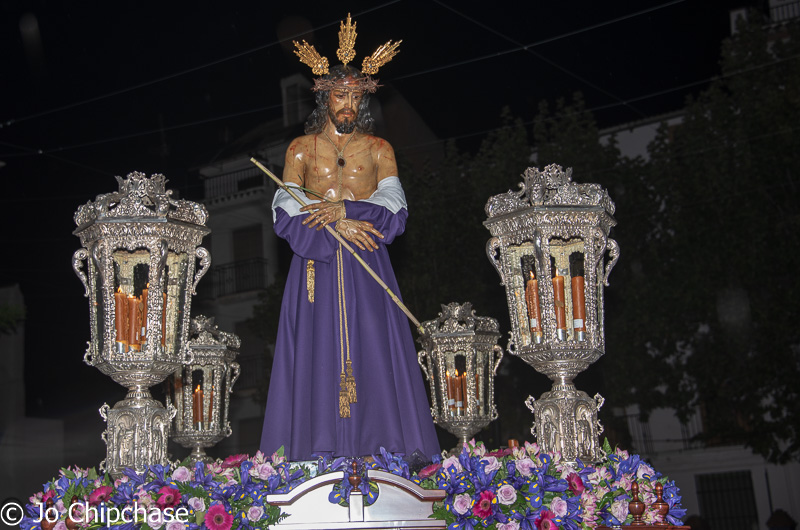
The historical element
Attracting both the devout and the curious, the annual spectacle of Semana Santa – otherwise known as Holy Week – traces its roots back centuries. The event blends Christian rituals with local customs. Legend maintains that the tradition was started by Saint Helena, who allegedly discovered the True Cross in the 4th century. Fast forward a few hundred years, mix in some medieval fervour, and the Semana Santa we know today was born.
These days, Semana Santa isn’t just a religious affair – it’s a full-blown fiesta week with events in large cities attracting thousands of visitors. In Malaga, visitors pay 150e per person to hire a balcony overlooking the main ceremonies (bad luck if it is then rained off!).
The processions include hooded penitents marching through narrow streets, accompanied by the sombre beat of drums and the scent of incense hanging in the air. The large and impressive effigies of Jesus, various saints, and Mary Magdalena (‘La Virgen’) are paraded for hours around Spanish towns. The effigies are carried by multiple ‘cofrade’ members, walking underneath the heavy stand and guided by four colleagues bearing each corner. This is no easy feat, bearing in mind the bearers cannot see out from under the stand, and the considerable weight of the effigies.
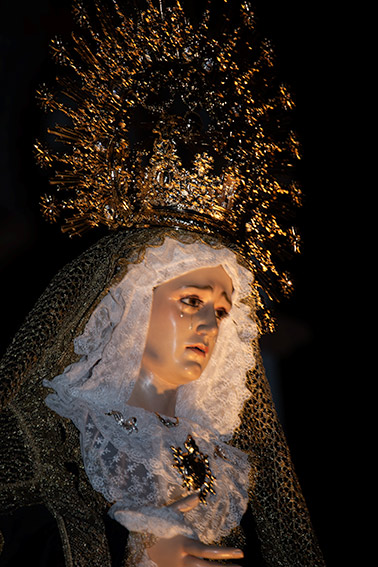
Some notable processions
In Granada region, an interesting procession is the iconic ‘La Borriquilla’, where donkeys adorned with flowers lead the way through the Albaicín. There’s also ‘El Cautivo’ – a solemn affair that winds its way through the historic Sacromonte ‘barrio’.
In Motril, a large coastal town famed for its sugar cane, you can witness the ‘Nuestra Señora de la Soledad’ procession – a moving display of devotion.
Over in Salobreña, perched high atop a rocky outcrop overlooking the sea, the ‘Virgen de la Esperanza’ procession is worth watching. As the sun sets over the Mediterranean, the solemn procession makes its way through the whitewashed streets of the town.
In La Alpujarra and Costa Tropical, Semana Santa takes on a rustic charm. The processions are steeped in tradition, with locals carrying the saints through narrow alleyways that are sometime adorned with flowers and banners. The spa town of Lanjarón is an ideal place to see the processions on both Sundays, and the Wednesday, Thursday and Friday, with plenty of bars and a kebab stand in the plaza open for the event. Órgiva is also a good place to watch Jueves and Viernes santos.
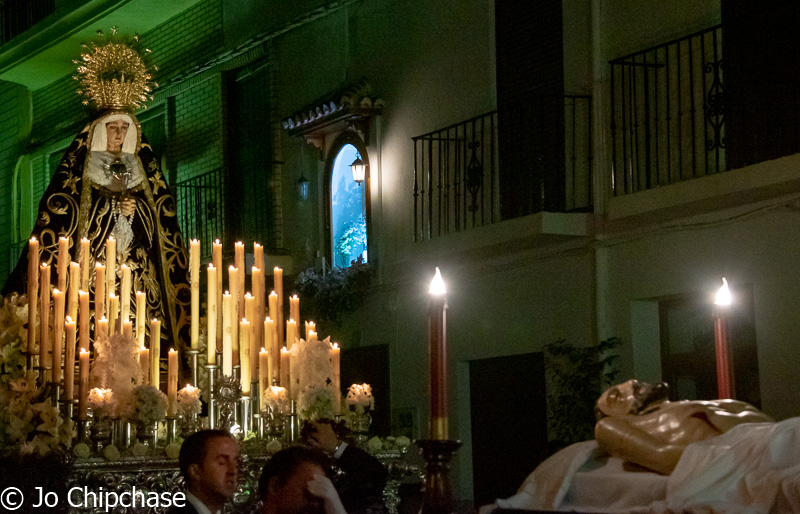
Behind the effigies
Have you ever wondered about the craftsmanship behind the impressive religious effigies that grace these processions? Depicting scenes from the Bible, or representations of saints, these are meticulously handcrafted by skilled artisans. Carved from various materials – such as wood, plaster, marble, and even gold – the effigies hold immense value, both sentimental and monetary. Some date back centuries, passed down through generations, while others are the result of modern craftsmanship, blending tradition with contemporary techniques.
With the ‘hermanadades’ being a tad competitive, there’s the perennial question: who has the most elaborate Virgin in the area? While opinions vary, many people would nominate ‘Virgen de las Angustias’ in Granada. Adorned with intricate robes, jewels, and surrounded by a halo of reverence, she commands attention. From her gilded crown to the delicate lace of her veil, every detail is crafted with precision.
Cofrades and Hermanadades: who’s who?
Behind every Holy Week procession are groups called ‘hermanadades’ and ‘cofrades’. What does that mean, you might ask? Well, really, there’s not much difference. Historically, the ‘hermanadades’ involved people of different professions and the ‘cofrades’ people from the same profession. They all had the role of honouring the patron saint of their town. These organisations dedicate themselves, all year round, to ensuring that the processions, involving their chosen saint, go smoothly. From polishing statues and ornate trims to practicing how to carry the effigy, they must prepare and rehearse everything in advance. This is why it’s such a disappointment when rain stops the parade.
A community event
For locals, Semana Santa isn’t just about religious worship (although that’s the main theme) – it’s a time-honoured tradition that brings communities, families, and friends together. During Holy Week, families frequently travel (or “displace” as it says on Spanish news) to stay with their relatives in different towns. Many people from Madrid and Barcelona will arrive in La Alpujarra to join family, participate in the local processions, and reconnect with their origins. Bars are full of people eating, drinking and socialising together. It is also a peak time for hotels.
What does each procession signify?
Domingo de Ramos (Palm Sunday): The procession on Domingo de Ramos marks the beginning of Semana Santa, commemorating Jesus’ triumphant entry into Jerusalem. It typically features participants carrying palm fronds and olive branches, symbolising peace and victory. The atmosphere is joyful, with crowds waving palms and singing hymns as they accompany the procession.
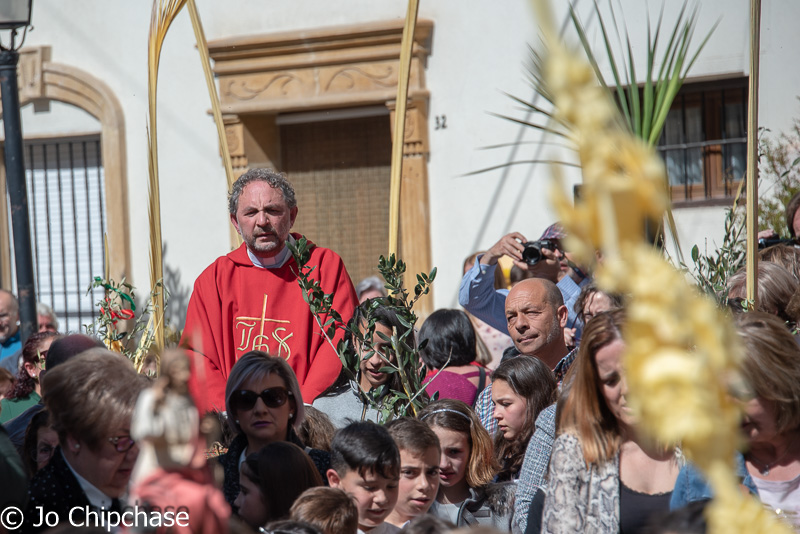
Lunes Santo (Holy Monday): On Lunes Santo, the processions focus on the events leading up to Jesus’ crucifixion. It’s a more solemn affair compared to Palm Sunday, with statues depicting scenes such as the Last Supper or Jesus’ agony in the garden. The mood becomes increasingly reflective as the week progresses.
Martes Santo (Holy Tuesday): Martes Santo continues the narrative of Jesus’ Passion, often featuring processions dedicated to specific religious themes or saints. These processions might include elaborate floats adorned with scenes from the Bible or statues of saints associated with the events of Holy Week.
Miércoles Santo (Holy Wednesday): Miércoles Santo marks the halfway point of Semana Santa, with processions that emphasise themes of repentance and forgiveness. Participants may carry crosses or symbols of Christ’s suffering, reflecting on redemption and spiritual renewal.
Jueves Santo (Maundy Thursday): Jueves Santo is one of the most solemn days of Semana Santa, commemorating the Last Supper and Jesus’ betrayal in the Garden of Gethsemane. Processions often feature representations of the Last Supper, as well as scenes depicting Jesus’ agony and arrest. It’s a time for introspection and contemplation of the sacrifice to come.
Viernes Santo (Good Friday): Viernes Santo is the most solemn day of Semana Santa, marking Jesus’ crucifixion and death. Processions on this day focus on the Stations of the Cross, with participants reenacting the journey to Calvary. It’s a day of mourning and reflection, with many participants dressed in black and carrying crosses or candles.
Domingo de Resurrección (Easter Sunday): Domingo de Resurrección celebrates the resurrection of Jesus Christ, marking the end of Semana Santa. Processions are joyous and triumphant, with participants carrying statues of the risen Christ or the Virgin Mary adorned with flowers. Sometimes, there are children ringing hand-held bells. It’s a day of hope and renewal, symbolising the victory of life over death.
